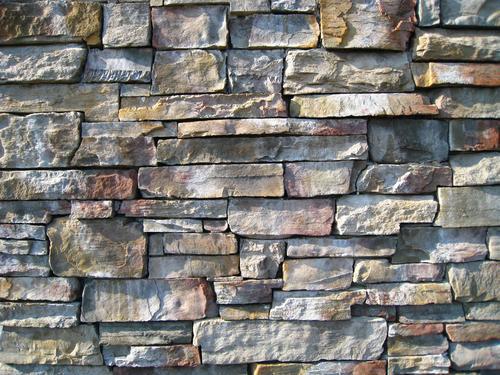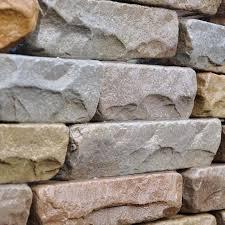Granite Exporters in India: The Story Behind a Stone That Travels the World

Granite Exporters in India: A Deep Look Into the Country’s Stone Legacy
Granite always feels like a quiet promise.
Cold at first touch, but strong. Heavy, but dependable. When it reaches a home—whether in India, Europe, the Middle East, or America—people rarely think about the hundreds of hands that shaped it or the land it came from. But every slab has a journey, and in India, that journey almost always begins in the middle of dusty hills, deep quarries, and towns that grew up around stone.
India is one of the world’s major forces in granite. Not just because of the volume, but because of the sheer range—colours, veins, textures, everything. The exporters who work in this field know the stone like a person knows a childhood friend. They can look at a block and tell where it came from, how it will behave, how it will polish, and whether it will impress a client halfway across the world.
This is their world.
And it’s worth stepping into.

Where Granite Lives in India
If you travel through the southern belt—Tamil Nadu, Karnataka, Andhra Pradesh—you’ll see granite everywhere. Long stretches of hills that look ordinary from far, but when you get closer, you notice the sparkle inside the rock. These regions hold some of the most valued granite varieties on the planet.
Black Galaxy.
Indian Juparana.
Viscount White.
Steel Grey.
Hassan Green.
And dozens more with names that feel poetic and a little mysterious.
Move north, and Rajasthan adds its own flavour with desert-born colours that look warm even when they’re in the shade. Gujarat contributes with pink and grey tones. Madhya Pradesh quietly adds earthy selections. Every region has its own pulse, its own temperament, its own style.
The land decides the story. Exporters simply help the world read it.
The Path From Quarry to Container
The process has a strange rhythm—fast in some parts, painfully slow in others. But each step matters.
Selecting the Quarry
Real exporters don’t just pick any quarry. They go on instinct sharpened by experience: the sound when the stone is tapped, the uniformity of the grain, the mineral glitter, the depth of colour, the cracks invisible to a regular eye.
Choosing a quarry is like choosing a long-term relationship. If the stone is inconsistent, clients lose trust. So selection becomes the first quiet test of expertise.
Cutting the Blocks
The stone isn’t blasted wildly. It’s nudged, guided, coaxed. Wire saws, controlled drilling, and careful splitting. The aim is to preserve the integrity of the block. One careless cut, and a block worth lakhs becomes rubble.
The sound of machines slicing through rock echoes across the hills. It’s sharp, metallic, sometimes eerie, but it’s also the sound of livelihoods.
Processing the Stone
This is where skill becomes visible.
-
Cutting into slabs
-
Polishing
-
Flaming
-
Leathering
-
Bush-hammering
-
Edge finishing
Factories fill with the smell of wet stone and coolant water. Workers move like they’re performing a familiar dance, adjusting thickness, checking shine with fingertips, inspecting every inch. A polished slab looks calm, but the work behind it is relentless.
Inspection and Sorting
This part can test patience.
Colour matching.
Thickness accuracy.
Surface quality.
Edge straightness.
Reflection under light.
Micro-cracks.
Exporters check slabs the way a jeweller checks stones. Quietly, carefully, obsessively. Because once the container leaves India, fixing anything becomes a nightmare.
Packing
Granite may be strong, but it dislikes careless travel. So exporters pack like they’re preparing something fragile:
-
wooden crates
-
nylon straps
-
foam separators
-
water-resistant layers
Everything must survive storms, rough seas, impatient forklifts, and port delays.
Loading and Dispatch
The container doors close. The seal number is recorded. The documents are handed over.
And then the stone begins its long journey to someone who will never see the quarry it came from.
Why the World Keeps Choosing Indian Granite
India doesn’t dominate by accident. There are reasons buyers keep returning.
1. Diversity of Colours and Patterns
Few countries offer such a massive palette. Dark blacks, swirling golds, calm greys, creamy whites, bold reds. Some granite looks like the night sky. Some like flowing water. Some like ancient ink swirling inside a rock.
This diversity makes India a favourite for architects and luxury builders.
2. Strong Infrastructure
Quarries, factories, processing units, polishing lines, export yards—entire cities revolve around stone. The ecosystem is mature, reliable, and deeply experienced.
3. Competitive Pricing
Not cheap—just fair.
And consistent.
That’s what long-term buyers appreciate.
4. Skilled Craftsmanship
You can teach someone to operate a polishing machine. You cannot teach them how granite “behaves.” That comes from years of handling it, arguing with it, learning its moods. Indian workers have that experience etched into their muscle memory.
5. Large-Scale Capability
Small orders, bulk orders, customised sizes, precise thickness levels—exporters in India handle all variations with surprising efficiency.
A Closer Look at Popular Granite Varieties
People love granite for its character. Some varieties feel bold, some feel calm, some feel luxurious. Here are a few that define the Indian export market:
Black Galaxy
Born in Andhra Pradesh.
Deep black, with tiny golden specks that look like stars scattered in the night.
Absolute Black
Pure, minimalistic, sophisticated. A favourite for high-end kitchens and monuments.
Viscount White
Stormy grey waves swirling over a white background. Every slab looks like a different painting.
Steel Grey
Reliable, uniform, modern. Works well in both commercial and residential spaces.
Indian Juparana
Warm, swirly, emotional. Often used where designers want something expressive without being overwhelming.
Red Multi and Lakha Red
Bolder choices, found mostly in Rajasthan. Loved in certain parts of Europe and Asia.
Green Granite
Elegant, smooth, timeless. Quarried primarily in Karnataka.
Each variety has its own story and its own audience.
Challenges That Exporters Face
People often imagine stone business as simple: cut → polish → export.
But reality is different.
1. Fluctuating Freight Costs
Sometimes the shipping cost becomes higher than the stone itself. A container stuck at a port can destroy margins instantly.
2. Seasonal Quarry Issues
Rain. Fog. Heat.
Each season brings its own problems—flooded pits, broken access roads, overheating machines, labour shortages.
3. Colour Variations
Stone is a natural product. Even blocks from the same quarry can differ slightly. Managing client expectations becomes an art.
4. Global Competition
Brazil, China, Turkey—all strong players. Standing out requires reliability, transparency, and quality consistency.
5. Skilled Labour Shortage
Younger generations often choose other careers. Many exporters worry about who will handle the stone two decades from now.
How Buyers Pick the Right Exporter
The smartest buyers don’t choose based on price alone. They look deeper.
Visit the Factory (physically or virtually)
A trustworthy exporter never hides their production line.
Ask for Multiple Samples
One sample can be selected. A set of samples reveals honesty.
Check Past Projects
Photos of previous shipments, crates, site installations—these tell a clearer story than words.
Look for Consistent Communication
Timely responses, detailed explanations, transparent updates—these things matter more than people realise.
Start With a Trial Shipment
It protects both parties and sets expectations correctly.
The Human Side of the Granite Trade
Every exporter has stories.
Some amusing. Some frustrating. Some unforgettable.
A buyer in Italy once rejected an entire shipment because the slabs were “too perfect.”
He said it looked machine-like and lacked the “soul” he wanted.
Another exporter in Tamil Nadu once spent an entire night recolouring a wooden crate because the client wanted pink labels to match their brand.
A factory worker in Jalore checks every slab with the same gentle touch every single day, even after 20 years. He says he can feel micro-cracks that machines miss.
Behind the hard stone is a surprisingly soft world—full of pride, disappointment, small victories, and a quiet sense of craft.
Where the Industry Is Headed
Granite exporting in India is changing—slowly, but surely.
Better Technology
Automatic resin lines, modern polishing heads, robotic cutters. These don’t replace human judgement, but they certainly save time and improve finishing.
Sustainable Processing
Factories are using water recycling systems, dust-control units, and energy-efficient equipment.
Growing Demand for Finished Products
Not just slabs.
But countertops, cut-to-size pieces, vanities, steps, risers, cobbles—everything pre-shaped and ready to install.
Stronger International Partnerships
Long-term collaborations instead of one-time deals.
Joint ventures.
Exclusive quarry rights.
This adds stability to everyone involved.

Final Thoughts
Granite doesn’t rush. It forms slowly, lives quietly, and lasts longer than most things we build. Maybe that’s why there’s something strangely grounding about the entire industry. Exporters in India work with a material that demands patience, precision, and humility. And in return, that stone travels to hundreds of cities, thousands of homes, and millions of memories.
The journey is big.
But it always starts with a hillside, a deep cut, and a slab that catches the light just right.
- Art
- Causes
- Crafts
- Dance
- Drinks
- Film
- Fitness
- Food
- Jeux
- Gardening
- Health
- Domicile
- Literature
- Music
- Networking
- Autre
- Party
- Religion
- Shopping
- Sports
- Theater
- Wellness


